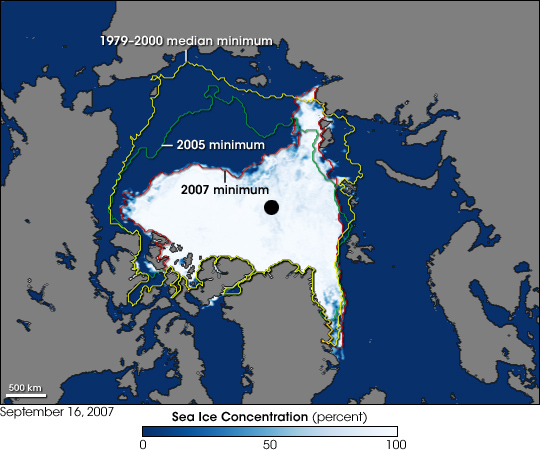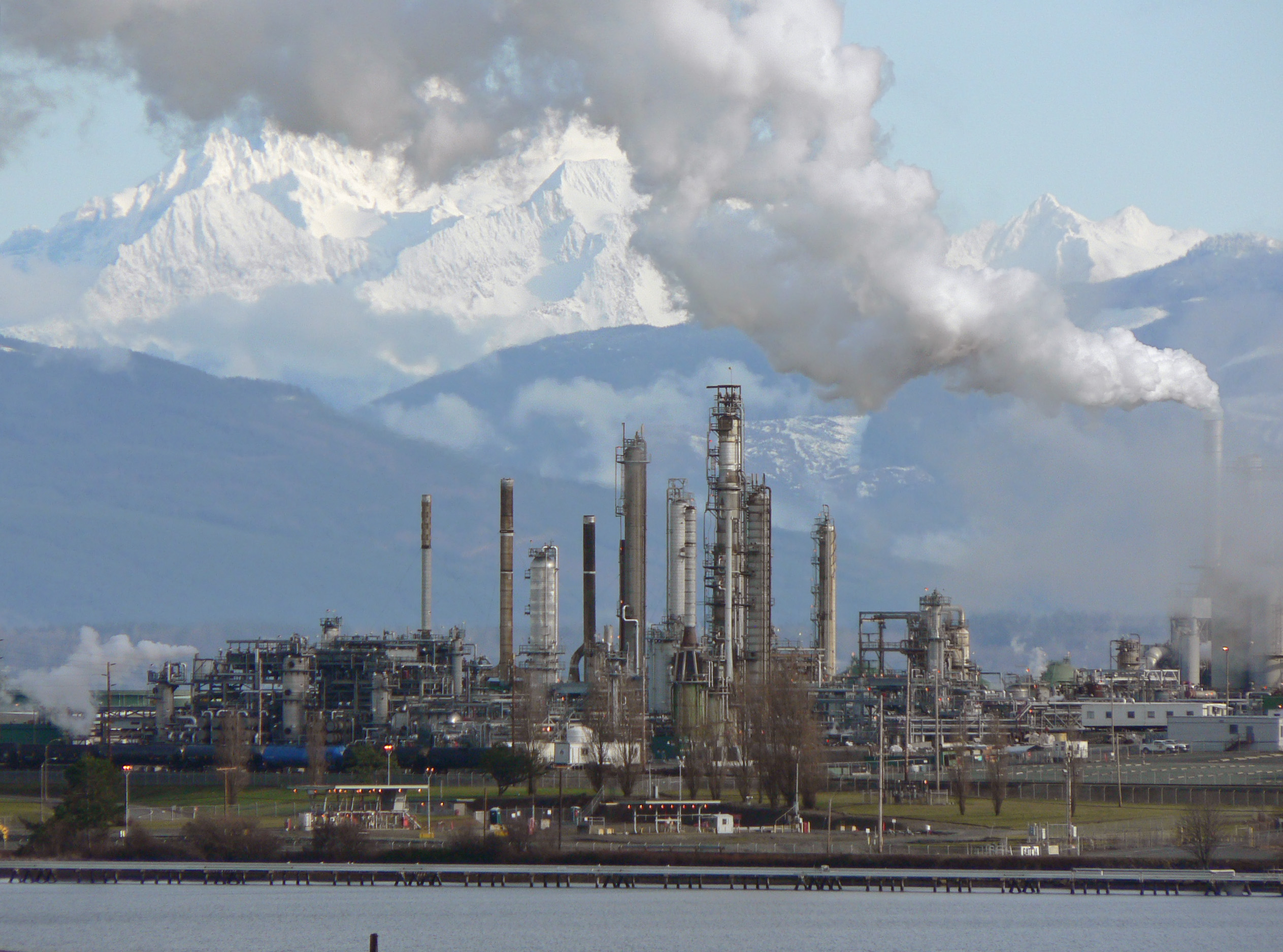Q: What's the difference between a cup of ice and a cup of water?
Q: How long does it take a cup of ice to become a cup of water?
Q: So what?
(Y'all come back now, ya hear?
)
When both Gore and Gringrich eco-guru
Lester Brown and oil & gas billionaire
T. Boone Pickens agree the US must fundamentally change our energy sources and use right away, you know we are in trouble. Climate changes will significantly alter life on Earth. Many of us are also concerned about gas prices and that the U.S. exports $700 Billion US dollars (and countless jobs) annually to
OPEC and other countries for oil and then pays another $120 Billion + a year (and since 2003, over
4,000 service members' lives) insuring
Texas Tea. Spending (not to mention ruining) so much
green, and too much
red, white &
blue blood for
black gold must end soon.
And then there is that annoying climate crisis. As Gore observes,
with Hurricane Katrina, we "entered A PERIOD OF CONSEQUENCES" (2006). Since then, things have only gotten worse than expected, sooner than predicted. We are no longer just talking about our children and grandchildren's world. Instead, noted scientists confirm that significant changes are underway now that will affect us during the next 5-15 years (maybe sooner, see below). Since delays will only lead to damage, Brown and a host of scientists urge Earthlings to mobilize now to save civilization, using
Plan B 3.0 as a blueprint (it is well worth reading). Pickens pushes the
Pickens Plan (also worth reading) from a slightly different angle to help protect the economy, the environment and the rule of law (though he phrases things differently).
Google just announced a plan (Go GOOGLE!) What's your plan? The
sUSAn plan endeavors to combine and simplify the best ideas of the day (see left sidebar).
Sagacious Union
for
Sustainable Abundance Now
(SAN) Plan
envisions We the People of the USA
in order to co-create a more perfect world,
establish energy justice and improve global security,
working together as
a team
to:
Switch
100% of all Carbon-Based Energy to 100%
Made in the USA, Clean & Profitable
Renewable Energies
by 2020
Use Less Carbon-Based Energy
Now & Until 2020
Strategically Transform & Correct
Fossil Fuel Pricing Starting
in 2010
Accelerate Energy Use
in Fast Growing
Countries
Neutralize CO2 Emissions Now
~ 20/20 by 2020 ~ 20/20 by 2020 ~ 20/20 by 2020 ~ 20/20 by 2020 ~
Ultimately,
the SanPlan seeks
20/20 by 2020.
It aims for having 20/20
clear-eyed and alert undistorted vision now
and air-pollution free vision by
2020. It aims to have profitable, diverse
large and small scale
Made in the USA
renewable energy (for everything)
linked by, yet not dependent on a new and improved international grid.
Since individual market-making choices will decide the ultimate mix, no one can say for sure what the US energy portfolio will be in 2020. However, it is an exciting time to be alive because just as coal dominated the 19th century and oil the 20th, the 21st century promises to be an age of clean water, fresh air and sunshine. Renewable energy use will usher in a huge leap forward in humankind's advancement. As we start harvesting more and more energy from the sun, wind and water, we will no doubt look back on the 2007 mix (at left sidebar) as representing the end of Dark Age II. Indeed, by 2020, our domestic energy consumption might only be 90% of our total domestic production, so that we can export the other 10%. Perhaps the mix will be:
22% from The Sun
Diverse Solar Plants & Rooftop Systems
 (Photo by Hans Hillewaert, from Wikimedia Commons.)
(Photo by Hans Hillewaert, from Wikimedia Commons.)
22% from WIND
High Altitude, Offshore(unless it causes too many problems), Helix, Attey & Rooftop Systems, etc.
 (Photo by NASA/JPL-Caltech, from Wikimedia Commons.)
20% from WATER
Hydro (no new big dams), Wave/Tide/Current, OTEC, Hydrogen
(Photo by NASA/JPL-Caltech, from Wikimedia Commons.)
20% from WATER
Hydro (no new big dams), Wave/Tide/Current, OTEC, Hydrogen
 (Photo by Lars Lentz, from Wikimedia Commons.)
5% from Biofuels
from Algae & inedible plant parts (none from corn)
(Photo by Lars Lentz, from Wikimedia Commons.)
5% from Biofuels
from Algae & inedible plant parts (none from corn)
 (Photo by NEON, from Wikimedia Commons.)
11% Enhanced Geothermal
(Photo by NEON, from Wikimedia Commons.)
11% Enhanced Geothermal
 (Photo by Wolfgang Beyer, from Wikimedia Commons.)
(Photo by Wolfgang Beyer, from Wikimedia Commons.)
10% from Natural Gas
(strictly for export) (methane hydrate photo from the U.S. Department of Energy.)
5% from Waste
(methane hydrate photo from the U.S. Department of Energy.)
5% from Waste
 (Photo of a Waste-to-Energy Plant by by Gralo from Wikimedia Commons.)
(Photo of a Waste-to-Energy Plant by by Gralo from Wikimedia Commons.)
5% from Fusion & Fission
(Photo by Stefan Kühn, from Wikimedia Commons.)
Doomsayers
who say we cannot switch to Ecologically and Economically advantageous power any time soon lack hindsight, present-sight and foresight. We can do it. Humankind switched from the stone to the bronze to the iron age, from the coal to the oil age. We will rise to the present opportunity as well. Our current fossil fuel-based economy is harmful to the planet and expensive. The
sooner we accept it and move on, the better off we will be.
Our oil addiction is not only a threat to capitalism, it is killing us (literally, see Dirty Death by Air Pollution and the 2000 Harvard Study). Some compare it to cancer, which is fitting given all the warning signs at gas stations and parking garages (ever wonder about those?). A better analogy, however, might be HIV. FFA (Fossil Fuel Addiction) exposes us to infinite risks. No wonder we have countless national security problems, economic problems, health problems, environmental problems, etc. Our fossil fuel use is not just unsustainable, it is suicidal.
If we are brave, quick and wise, recovering from our oil addiction will be great for individuals and for our world. Not only will we save Trillions in health care costs and productivity, Trillions in national security expenditures, Trillions in environmental clean-up savings, etc., we have AWESOME opportunities to create wealth and improve the quality of life. Made in the USA renewable energies will create good jobs and position us to become energy exporters (thus the 120% 'consumption mix' above - because we will make more than we will use).
Economic opportunities such as the one we now face do not wait for slowpokes. If we do not get on the ball, foreign companies will beat us to international markets. Besides, now that the global climate crisis rudely arrived ahead of schedule, unless we accept the death of the nation as an option, we must do what is needed. With Hurricane Katrina, we "entered A PERIOD OF CONSEQUENCES" (Gore, 2006). Seethe Climate Project FMI and excellent photos. These from the public domain are a little dated:
The Aral Sea, which in 1960 was the world's 4th largest lake
and as large as Southern California, is all but dead
(the photo on the left is from 2003).
 (Photo by NASA, from Wikimedia Commons.)
(Photo by NASA, from Wikimedia Commons.)
And, in 2007, the Arctic reached a new record sea ice minimum.
 (Photo by NASA, from Wikimedia Commons.)
(Photo by NASA, from Wikimedia Commons.)
Whereas Arctic ice shrinkage increased by about 9% per decade from 1979 to 2006, in 2007, an area of ice nearly twice as large as Britain melted in a single week (Plan B—How to Stop Global Warming)
. Data from Navy submarines traversing under the North polar ice cap now indicate a 75% chance that within 5 years "the entire ice cap will completely disappear during the summer months" (Gore, 2008). And, at "today’s already elevated temperatures, the massive Greenland and West Antarctic ice sheets—which together contain enough water to raise sea level by nearly 40 feet (12 meters)—are melting at accelerating rates" (Brown, et al).
Like/believe it or not, all these and countless other climate, economic, and security problems related to global warming are becoming more and more serious and scary every day. We are very quickly approaching a point of irreparable
damage, of having the Earth "spit us out" (to use Biblical terms, since we are returning to Biblical times). Clearly, the only responsible option is to take brave, well-informed steps to lessen the risks and damage. We need to act quickly, but should resist the temptation to drill for new oil (or, if we do not, let oil companies take the stupid risks as long as they pay hefty fees so that they do not rape the environment at taxpayers' expense). Hard to believe that even without increased fees they would want to take the risk of drilling for oil (guess the addiction runs deep) because drilling is like flying to Mars to buy a six-pack for an alcoholic: it will take too long and be the exact opposite of what is needed.
We need to sober up and take our medicine. The compelling threats posed by climate change require a sage, urgent response, not knee-jerk idiotic drilling-for-oil-where-we-should-not-be ones. We must also resist pessimism, paralysis and panic-attacks. The path is clear and simple, all we need to do is "transform our economy by using energy much more efficiently, and by tapping our huge domestic reservoir of clean, renewable resources" (
Alden Meyer, Union of Concerned Scientists see
WeCanSolveIt.org).
As the honorable Al Gore, in his
Generational Challenge to Repower America speech puts it, "we are called upon to move quickly and boldly to shake off complacency, throw aside old habits and rise, clear-eyed and alert, to the necessity of big changes." Of the aims Gore outlined for generating 100% of our electricity with solar, wind and other renewable resources, the Associated Press reports
Sen. John McCain as saying, "If the vice president says it's doable, I believe it's doable."
Sen. Barack Obama agrees with Gore that "that we cannot drill our way to energy independence, but must fast-track investments in renewable sources of energy like solar power, wind power and advanced biofuels" noting that as President, he will invest in a strategy to "create millions of new jobs that pay well and cannot be outsourced" - jobs that will leave our children a cleaner and safer world (see:
WeCanSolveIt.org).
Regardless who leads the USA from 2009 on, the SanPlan envisions
well-informed, diverse members of society eagerly cooperating with bold, sagacious, unbiased leaders, who will not tolerate Enron-like emperors with no clothes, useful idiots or a conspiracy of fools (anyone so inclined is asked to kindly step aside).
 (Photo by Alvesgaspar, from Wikimedia Commons.)
(Photo by Alvesgaspar, from Wikimedia Commons.)
The good news is that with well-planned, determined efforts, the US could produce so much competitive clean energy by 2020 that we will be able to export natural gas and other energy. "Scientists have confirmed that enough solar energy falls on the surface of the earth every 40 minutes to meet 100 percent of the entire world's energy needs for a full year.... And enough wind power blows through the Midwest corridor every day to also meet 100 percent of US electricity demand" (
Gore, 07/17/08). Interestingly, Algeria, which is a leading oil exporter sees the light of day; they plan to make solar thermal energy to export to Europe (Brown, et al, page 5). According to Pickens and others, fossil fuel production has already peaked. This means that from now on (no matter how much new drilling is done) extracting it will cost more and result in less energy production at the same time. It will soon take more energy to make energy from oil than the energy oil can create. If Algeria understands that oil economics no longer work, surely, at the very least, we in the USA can overcome our oil addiction.
The demise of the dinosaur oil age is in sight, yet if we act quickly and effectively enough now, by 2020, as long as it would take significantly less energy to produce and export it than the amount of energy it produces, and as long as it can be done with sufficient taxable profits (once all costs are measured), we could export natural gas to places that have carbon capturing and/or offsets and need a little stone age fuel to bridge the gap as they too switch to renewable energy.
Other than ending our use of carbon-based fuels while producing energy from diverse renewable sources that increase our options and safety during disasters, the SanPlan does not aim for a specific mix. Rather, it envisions an informed market figuring it out, and each region producing whichever type of renewable energy is the smartest, most economically and environmentally (viewing these terms as interconnected, not as opposed to each other) beneficial once all factors are considered. Key considerations, however include that some types of renewable power are more suitable for particular regions than others, and that some types within types are superior to others (see post below).
~ Save USa Now ~
 (Photo from Wikimedia Commons.)
(Photo from Wikimedia Commons.)
Currently, carbon-based energy accounts for about 86% of US energy consumption, so, we only need to switch an average of 8% a year for the next 11 years to meet this goal. We can do this. Perhaps by then, instead of the 86% from carbon-based fuels:
will produce a mix of 50% solar, 20% non-windmill wind,15% water (with no new dams) and 15% from other sources;
will produce a mix of 30% solar, 50% mostly non-windmill wind (not just the 20% put forth by the Pickens Plan), 10% water (with no new dams) and 10% from other sources;
Other States
will produce a mix of 25% solar, 35% high altitude wind power,20% water (with no new dams) and 20% from other sources;
The above is just illustrative. It is too early to aim for a specific mix, however,
we should not:
* Divert natural gas from electricity generation to fuel private vehicles, because not only is it unnecessary, doing so would be problematic, perilous and costly. Why give other countries an even greater chance to leap ahead of US auto designers by taking such a foolish detour?
* Discount large over small or small over large. Because of the distance involved in getting it from a large central project to places it is needed, they have more waste that home-grown rooftop energy systems do. Plus, if "you own it on your own, it’s going to be at a cheaper price than if the utility company is going to sell it to you” (see
What’s So Bad About Big?). Moreover, in addition to being more in line with our 'build / own / do it yourself' culture, small scale would also offer more disaster protection. All the same, given promising developments such as high altitude wind technologies, economies of scale, the long-term nature of renewable energy investments, large-scale operations also have a place in the new energy economy.
* Let charisma or group think divert regions from performing unbiased comparisons of the various renewables. Each type has pros and cons. For example, many people consider noisy, bird-killing, dust-stirring, Cuisinart-of-the-sky windmills as inferior to elegant, well designed, aviary-benign wind turbine designs such as the
Helix Wind Turbine and
Graeme Attey's Design. Why select the 'coal' of the renewables if other options are available? In any case, it is not appropriate to compare windmill turbines or solar thermal plants with carbon-based options, because that is not the question. Rather, decision makers should compare them to other renewable energy types, including other wind turbine designs and other solar options. Offshore windmill farms appear to resolve many concerns, and if a few states want them in their backyard, with all their problems--e.g., light, noise and air pollution (from erosion and the stirring up of particulates), so be it. However, windmill farms should not be imposed on communities that prefer other types of renewable energy.
Ultimately, each region should determine what is best for them via well-informed participatory processes (without undue influence or misinformation from people who stand to profit from particular types) and to develop their renewable resources with national support and oversight (sans shenanigans), while collectively building a new and improved national grid.
In any case, most energy produced should be linked to the grid, so regions that produce energy most effectively could supply it most of the time. At the same time, the grid should be decentralized, with links to diverse sources to mitigate risks associated with climate and other disasters. Each region, household and entity should be able to produce enough of their own energy independently, and to able to buy or sell power to the grid when needed or beneficial.
Coal miners, gas station workers, and everyone else who derives a livelihood from fossil fuels would have a place in the new clean air and sunshine energy economy, but we must fire internal combustion engines. The last year 100% gas cars should be made should be as early as 2010, so that by 2020, all 100% gas only cars could be retired (recycled or put in museums). In other words, buy your hybrid now! Hybrids could bridge the gap until in 2015 (or so), only cars that run on plug in at home electricity, fuel cells, biofuel, hydrogen, and/or compressed air would be made, sold and used. Hybrids could then be phased out as well. Imagine, by about 2025, no one will need to make any more inconvenient and expensive trips to the gas station!
Since it will improve national security, it might be fitting for the military to partner with private industry in a competitive process to see which renewables provide the best overall results for a given region. For example, an Air Force team could work with High Altitude Wind Power developers, perhaps one from the Navy could work with Nuclear Fusion Scientists, team Marine with Offshore non-Windmill Wind Farms (recycling oil rigs), a U.S. Army Corps of Engineers could work with companies to install solar systems and/or Helix Wind Turbines
every federal, state, county and city building roof in the nation and abroad (see
Clinton on Climate Change - he is doing something like this with cities, banks, construction companies, etc.).
Use Less Carbon-Based Energy Now & Until 2020

(Photo of a hybrid DE40LFR bus by Shadowlink1014, from Wikimedia Commons.)
High fossil fuel energy prices hurt people, so we need to conserve and use them more efficiently as we free ourselves from them to keep prices in check. As use declines, baseline prices should in the short term as well (thus the need to transform prices, to prevent demand from increasing). We can also save a lot of money by reducing fossil fuel use and increasing efficiency. Pages 2 and 3 of "
Time for Plan B" has excellent "Saving Energy Saves Money" information. Their suggestions for making efficiency and conservation efforts produce the most financial savings are well worth reviewing.
Right now we can DRIVE SMARTER & LESS:Every gallon of gas saved
reduces CO2 emissions by about 20 lbs. Since Americans drove
12.2 Billion fewer miles in June 2008 than in June 2007, we saved nearly 240 Billion pounds of emissions! Drivers can also get 35% better fuel mileage with their current vehicle by using a device most already have–
their right foot. Every 10 mph driven over 60 mph cost as much as having gas prices going up about
54 cents a gallon. So driving 65 mph instead of 75 conserves gas and money. Buying gas from local stations with the lowest prices also saves money, and a lot as well. It also sends an important message to the market that helps keep prices in check. Reducing demand also helps keep prices in check, so
Walk and Roll (go
Portland!) more often; LIVE closer to WORK and/or WORK at HOME more often; SHOP less often, closer to or from home and buy locally grown foods,
vintage items, and bring your own bag.
Support your local community by taking staycations more often than vacations. Invite friends and family for slow food feasts more, and have fewer solo drive through meals. Play card and board games more often and watch TV less often. Go antiquing, garage sale and thrift store hunting with friends instead of shopping solo at the mall. Take the kids to local farms, elders to farmers markets, carpool to local winery, brewery, distillery with friends (and a designated driver), join a hybrid car club, etc. The possibilities are endless!
Strategically Transform & Correct Fossil Fuel Pricing Starting in 2010
 (Photo by Walter Siegmund, from Wikimedia Commons.)
(Photo by Walter Siegmund, from Wikimedia Commons.)
High gasoline prices hurt people who must drive to meet their daily needs. Paradoxically, however, high fossil fuel prices are the very medicine we need to cure our "dinoil" addition. Besides, they also have many positive side effects. For example, they cause us to drive less, which reduces the number of accidental deaths. Driving less also reduces emissions (we reduced emissions by nearly 240 Billion pounds in June of 2008 compared to June 2007), which in turn reduces the number of pollution-related deaths.
(Also see: Will the Power of 4 ($4 Gas) Fade?)
By the way, we cannot afford to allow fossil fuel pushers to take advantage of our concerns about high fuel prices by brainwashing us into thinking that drilling for more oil is part of the solution. It is a fallacy. Not only would it not reduce prices, drilling for new oil would be like going to
Candy Mountain with Charlie to buy a package of bon-bons for breakfast: dangerous to our health. Conservation and increased efficiency are the best things we can do to stem price increases in the short term. And quickly weaning ourselves from fossil fuels is the best way to make fossil fuel prices a non-issue within a decade.
T. Boone Pickens (who made a fortune int he oil industry) answers the, "Can't we just produce more oil?" question frankly as follows:
"World oil production peaked in 2005. Despite growing demand and an unprecedented increase in prices, oil production has fallen over the last three years. Oil is getting more expensive to produce, harder to find and there just isn't enough of it to keep up with demand.
The simple truth is that cheap and easy oil is gone."
Besides, you don't have to be smarter than a 5th grader to figure out that drilling for new oil will take too long. By the time the 'new' oil reaches the pump, we will need to have kicked our oil habit and converted our autos to engines that do not run on gasoline, not falling off the clean, sober and profitable renewable energy wagon. Even if we have not entirely weaned ourselves from it, drilling will not cause prices to go down because the exploding demand, especially in fast growing countries, "is overwhelming the rate of new discoveries by so much that oil prices are almost certain to continue upward over time no matter what the oil companies promise" (Gore, 07/17/08). Moreover, an extremely effective way to bring prices down within a few short years exists: END our oil dependence by switching to renewable energy that "can give us the equivalent of $1 per gallon gasoline" (Gore, 07/17/08).
We must change the policies and practices that have produced "the highest gasoline prices in history alongside the greatest oil company profits in history (Gore, 07/17/08). The $1 Trillion per year we spend for oil is only the tip of the iceberg. All oil-derived products require refining and distribution, which adds another 30% or more to their costs and more pollution to the Earth. What's worse, our fossil fuel use worsens the worst of all our woes.
Our national carbon emissions destabilize the climate and use of carbon fuels and products degrades the environmental. Our carbon-fuel policies, practices, and use exacerbates under and unemployment, the trade deficit, the federal debt, the devaluation of the US$, health problems such as asthma, cancer and a host of other serious conditions caused and/or made worse by fossil fuel pollution, reduced productivity, etc. The list goes on and on and on.
The cost is absurd because all evidence suggests our fossil fuel use could very well cause not just the end of the United States of America, but also threatens to make our species go the way of the dinosaurs. Thus, the real cost of gas once all factors are considered, is probably more than $100 per gallon right now. That is, $3-5 for the gas, and another uncountable amount in costs passed on to third parties (taxpayers, future generations and people in other countries) and the Earth. All the while, oil companies, who are not paying their fair share of these costs, make record profits. Such a gross market failure threatens capitalism and the entire world.
Indeed, low gas prices only keep us steeped in the sickening Texas Tea. Those who push for lower prices by painting the oil companies as the bad guys are like heroin addicts blaming their pushers, while pushing needles into their own arms, while demanding a topical anesthetic to make the needle less painful. All the pushing, pumping and using must end. Making the heroin cheaper and easier to use will only make matters worse. Naturally, we addicts do not want to hear this and might not be able to hear it, thus we need plug-in (methadone) cars instead of pump-addicted (heroine) cars. Yes, let's make & buy cars that plug in at home and recharge overnight during non-peak hours while most folks are sleeping. Imagine, never having to go to the pump again!
We need to aim for NO gas prices, not LOW gas prices. We need to transform 'at the store' price of all oil-based products to make their producers and users pay all costs associated with their production and use. Transforming the price can be accomplished through a combination of market-correcting supplemental charges for oil-based products, pollution reduction incentives and pollution production disincentives. In other words, we need to "tax what we burn, not what we earn!" This will not be an overall tax increase, instead, it's a tax shift. Most economist and experts agree that we need to do this, even Gregory Mankiw, economist and former chairman of President Bush's Council of Economic Advisors.
Fossil fuel taxes will make it appear as if fossil fuel prices are increasing, however, they would really just make existing costs more apparent so consumers would see "20/20" what we have been paying all along. Transforming the prices would actually decrease the total cost we pay for our use. It will turn national fat into muscle. Muscle weighs more than fat, yet it is much stronger. Currently, allowing the distorted pricing creates fat and burdens not just our health, but also our economic and environmental systems. Making fossil fuels prices reflect their actual cost will burn fat into muscle, making all citizens healthier, wealthier and wiser. As fossil fuel prices start to reflect their true costs, more of us will think thrice before using fossil fuels, and it will be easier to switch to renewable energy.
Although swallowing our medicine will be hard at first, the faster we switch, the easier it will be and the sooner we will benefit. In addition to improving our health, safety and environment, switching will create good jobs. The resulting increased home and clean auto purchases will stimulate the economy. We need not wait for the new administration to improve our standard of living; we can create cleaner better energy now. We can decrease our fossil fuel use now. All the same, come November, we need to select leaders who will transform fossil fuel prices via net-neutral, market-correcting surcharges (i.e., taxes; see below). Making the real cost of these fuels apparent will decrease demand. As we recover from our oil dependence and make more clean home grown energy, prices for fossil fuels should remain reasonably steady because if they get too high, it will just increase the rate at which we switch (and start exporting oil at the increased prices).
Part of the thinking is that if a product causes several big problems, it is only fair that whoever uses it should also help fix them. At the same time, since nearly all of us use the product in question, it would be tough to swallow the pill we need if product prices go up all at once, with no sugar to help make the medicine go down. Thus, we need to find, "the most delightful way" to offset the market-correcting fossil fuel tax that we need to self-impose. This is not a partisan issue, nor is it about tax and spend or anything like that. We are already spending. We need to tax in order to save ourselves, future generations and the world (consider contacting your representatives to let them know you support fossil fuel tax increases if they are offset by tax decreases elsewhere).
Since making labor in the USA more affordable (so that US employers could better afford to hire US employees instead of sending jobs abroad), perhaps we could best offset the needed fossil fuel taxes by eliminating all (yes, all) income-based taxes on the first $100,000 of a family's income. This would have the added advantage of saving trees and reducing all the trouble and time tax time causes so many people. "Cap and trade" plans might sound good, yet will not be needed if we just keep things simple and tax fossil fuel use. At the same time, we should provide tax credits to individuals and businesses that retire fossil fuel-guzzling equipment and vehicles.
In addition to neutralizing taxes, we also must neutralize subsidies. We must end "every bridge to nowhere" (Gringrich); end all subsidies to non-sustainable industries and practices (including mono-cropping) and invest the savings into sustainable practices, products and services until they secure their place in the market (yet not beyond that). Gingrich's suggestion of a $1 billion prize for one breakthrough is interesting. Perhaps that is a little much for one field (why put so many eggs in one basket?), yet why not a competition, with 100 or so $10 million prizes for the best in each of 100 (or so) categories (including the best new US energy plan)?
Accelerate Energy Use in Fast Growing Countries
 (Photo by NASA’s Earth Observatory, from Wikimedia Commons.)
(Photo by NASA’s Earth Observatory, from Wikimedia Commons.)
T. Boone Pickens is great at telling it like it is: "America uses a lot of oil." He explains that "85 million barrels of oil are produced around the world" everyday. "And 21 million of those are used here in the United States." As he points out, "that's 25% of the world's oil demand. Used by just 4% of the world's population." So, it is easy to understand how some folks are annoyed that we emit more green-house gases than any other nation in the other 96% of humanity (
more than China, more than India, more than Africa).
As Gore points out, to foster international cooperation, the US needs to rejoin the global community and lead efforts to secure an international treaty in December of 2009 that includes a cap on CO2 emissions and a global partnership that addresses the threats of extreme poverty and disease as part of the solution to the climate crisis. Although it is counter-intuitive as far as curbing CO2 emissions is concerned, the well-planned increase of energy use in fast growing countries is also needed to decrease their CO2 emissions over the next several years.
This is because while our current energy use causes all sorts of problems, inadequate energy consumption perpetuates poverty and poses all sorts of risks to everyone. Properly managed increased energy use is associated with improvements in living standards, higher levels of education, and the stabilization of population growth (see: Energy: Science, Policy and Pursuit of Sustainability (2002) explains how). Thus, it is in our best interest to use energy more effectively and to use less energy per person, all the while partnering with countries that do not currently have enough energy improve their access to it (see:
Sustainability for Rich and Poor).
Neutralize CO2 Emmissions Now
 (Image by a work of the United States Federal Government, from Wikimedia Commons.)
(Image by a work of the United States Federal Government, from Wikimedia Commons.)
In addition to tacking the fast track to put an end to CO2 emissions all together, we also need to stop doing so much damage everyday to our planet. We must neutralize all CO2 emissions. We can start by transforming our food production practices and consumption habits. Agriculture uses land, fertilizers (mostly petroleum-based), pesticides, water, and other resources to grow food and fiber. How these are used significantly effects human and environmental health. Right now, to put it mildly, we are not doing so well. For example, our agricultural practices have lead to a "dead zone" (called such because it has such a low oxygen level that most marine life cannot live in it) in the Gulf of Mexico that in 2007 was 7,903 square miles. In 2008, it grew to just under 8,500 square miles (roughly the size of New Jersey). Scientists have identified the use of commercial fertilizers in states bordering the Mississippi River "as a primary culprit behind the phenomenon" (
John Roach for National Geographic News).
Clearly, we need to improve agricultural land management practices by investing in and incentivizing sustainable agriculture while also ending subsides for and disincentivizing environmentally and economically harmful practices (see:
The Land Institute). Not only do we need to make and eat more organic foods (they take much less fossil fuel-based fertilizer to produce, and mitigate the many problems associated with chemical pesticides), we also need to switch from large to small. This is because the small U.S. farms (27 acres or less), have more than ten times greater dollar output per acre than larger farms. Moreover, in U.S. farming communities dominated by large farms, nearby towns have died off. In contrast, communities with mostly smaller farms have more local businesses, paved streets and sidewalks, schools, parks, churches, clubs, and newspapers, better services, employment, and more civic participation. Small farmers also devote much more area to woodlands (17% as compared to only 5% on large farms. And, small farms maintain nearly twice as much of their land in "soil improving uses," including cover crops and green manures (Source: USDA reports and
Benefits of Grass Fed Beef, 2008).
Responsible, organic management of the soil, water, and wildlife on all U.S. farms will produce significant benefits for our country and good for the Earth. In contrast, meat prices would double

or even triple today if the full ecological costs (including fossil fuel use, groundwater depletion and agricultural-chemical pollution) were factored into their prices. Since we and future generations are already paying these hidden prices, we must raise and eat less meat (especially beef). Consider, in Maryland,
chickens outnumber humans nearly 60 to 1! Additionally, according to the USDA, animals in the US meat industry make 61 million tons of waste a year (130 times the annual volume of human waste). Surely, instead of letting the animals take over, each meat-eater in the USA could eat a little less meat.
It takes 500 or 2,500 gallons of water to produce a pound of beef in the U.S. (depending upon who does the math), so now that a devastating drought has returned to Dust Bowl country, it is an especially good time to slow our meat production and consumption. Since the fall 2007, drought has been creeping up on the High Plains of northeastern New Mexico, southeastern Colorado, southwestern Kansas, the Oklahoma Panhandle, and northern Texas. The U.S. government recently declared 9 counties in western Oklahoma “primary natural disaster areas.” More than sixty bordering counties in Colorado, Kansas, Missouri, Arkansas, Texas, and New Mexico are eligible for disaster relief under the declaration. The declaration may also allow tax breaks for ranchers forced to sell their herds (see:
Devastating Drought Settles on the High Plains).
In addition to offsetting CO2 emissions by improving agricultural practices, we need to help end deforestation and plant more trees.

From now until 2010, in concert with the U.N. Environment Programme and Nobel Peace Prize Laureate Wangari Maathai, we ought to plant one tree for every person on the globe. A tall order? Not really. By mid-2008, over 2 billion trees had been planted in more than 150 countries. People in Ethiopia planted 700 million trees; folks in Turkey, 400 million; in Mexico, 250 million. In a single day, the state of Uttar Pradesh in India mobilized the planting of 10.5 million trees (see
Time for Plan B, page 7 FMI).
T
ransforming our food production and consumption practices will help end deforestation in other countries. (see Earth Observatory's "Tropical Deforestation" FMI on disappearing forests). As it stands now, in addition to increasing CO2 emissions and causing all sort of domestic health problems, corn-feed beef consumption in the U.S. encourages deforestation around the globe. As of 2007, we were importing 2.5 million head a year (we consumed over 28 billion pounds in 2007!). And, all those cows use a lot of land and emit a lot of CO2. Thus, we probably ought to also transform beef and other meat prices sometime before 2020 as well.
Saving the USA will take a lot of work - but it's worth it!
 The Earth seen from Apollo 17.
The Earth seen from Apollo 17.
As Noble Peace Prize Laurete Al Gore points out, "our dangerous over-reliance on carbon-based fuels is at the core of all" of our "economic, environmental and national security crises." To the lament that we are "borrowing money from China to buy oil from the Persian Gulf to burn it in ways that destroy the planet" he explains we are holding the solution to all these problems in our own hands. Ironic in its simplicity, the solution "is to end our reliance on carbon-based fuels." His vision and passion inspired the sUSAn plan which, taking his challenge seriously, similarly seeks to help Save USa Now.
What's your plan?
Whatever it is, please consider telling your representatives to
"Tax what we burn,
not what we earn!"
or it will be all the more difficult to do what we must do.
 (Photo by NASA/JPL-Caltech, from Wikimedia Commons.)
20% from WATER
Hydro (no new big dams), Wave/Tide/Current, OTEC, Hydrogen
(Photo by NASA/JPL-Caltech, from Wikimedia Commons.)
20% from WATER
Hydro (no new big dams), Wave/Tide/Current, OTEC, Hydrogen
 (Photo by Lars Lentz, from Wikimedia Commons.)
5% from Biofuels
from Algae & inedible plant parts (none from corn)
(Photo by Lars Lentz, from Wikimedia Commons.)
5% from Biofuels
from Algae & inedible plant parts (none from corn)
 (Photo by NEON, from Wikimedia Commons.)
11% Enhanced Geothermal
(Photo by NEON, from Wikimedia Commons.)
11% Enhanced Geothermal
 (Photo by Wolfgang Beyer, from Wikimedia Commons.)
(Photo by Wolfgang Beyer, from Wikimedia Commons.)
 (methane hydrate photo from the U.S. Department of Energy.)
5% from Waste
(methane hydrate photo from the U.S. Department of Energy.)
5% from Waste
 (Photo of a Waste-to-Energy Plant by by Gralo from Wikimedia Commons.)
(Photo of a Waste-to-Energy Plant by by Gralo from Wikimedia Commons.)
 (Photo by NASA, from Wikimedia Commons.)
(Photo by NASA, from Wikimedia Commons.)
 (Photo by Alvesgaspar, from Wikimedia Commons.)
(Photo by Alvesgaspar, from Wikimedia Commons.)
 (Image by a work of the United States Federal Government, from Wikimedia Commons.)
(Image by a work of the United States Federal Government, from Wikimedia Commons.)
 or even triple today if the full ecological costs (including fossil fuel use, groundwater depletion and agricultural-chemical pollution) were factored into their prices. Since we and future generations are already paying these hidden prices, we must raise and eat less meat (especially beef). Consider, in Maryland, chickens outnumber humans nearly 60 to 1! Additionally, according to the USDA, animals in the US meat industry make 61 million tons of waste a year (130 times the annual volume of human waste). Surely, instead of letting the animals take over, each meat-eater in the USA could eat a little less meat.
It takes 500 or 2,500 gallons of water to produce a pound of beef in the U.S. (depending upon who does the math), so now that a devastating drought has returned to Dust Bowl country, it is an especially good time to slow our meat production and consumption. Since the fall 2007, drought has been creeping up on the High Plains of northeastern New Mexico, southeastern Colorado, southwestern Kansas, the Oklahoma Panhandle, and northern Texas. The U.S. government recently declared 9 counties in western Oklahoma “primary natural disaster areas.” More than sixty bordering counties in Colorado, Kansas, Missouri, Arkansas, Texas, and New Mexico are eligible for disaster relief under the declaration. The declaration may also allow tax breaks for ranchers forced to sell their herds (see: Devastating Drought Settles on the High Plains).
In addition to offsetting CO2 emissions by improving agricultural practices, we need to help end deforestation and plant more trees.
or even triple today if the full ecological costs (including fossil fuel use, groundwater depletion and agricultural-chemical pollution) were factored into their prices. Since we and future generations are already paying these hidden prices, we must raise and eat less meat (especially beef). Consider, in Maryland, chickens outnumber humans nearly 60 to 1! Additionally, according to the USDA, animals in the US meat industry make 61 million tons of waste a year (130 times the annual volume of human waste). Surely, instead of letting the animals take over, each meat-eater in the USA could eat a little less meat.
It takes 500 or 2,500 gallons of water to produce a pound of beef in the U.S. (depending upon who does the math), so now that a devastating drought has returned to Dust Bowl country, it is an especially good time to slow our meat production and consumption. Since the fall 2007, drought has been creeping up on the High Plains of northeastern New Mexico, southeastern Colorado, southwestern Kansas, the Oklahoma Panhandle, and northern Texas. The U.S. government recently declared 9 counties in western Oklahoma “primary natural disaster areas.” More than sixty bordering counties in Colorado, Kansas, Missouri, Arkansas, Texas, and New Mexico are eligible for disaster relief under the declaration. The declaration may also allow tax breaks for ranchers forced to sell their herds (see: Devastating Drought Settles on the High Plains).
In addition to offsetting CO2 emissions by improving agricultural practices, we need to help end deforestation and plant more trees.  From now until 2010, in concert with the U.N. Environment Programme and Nobel Peace Prize Laureate Wangari Maathai, we ought to plant one tree for every person on the globe. A tall order? Not really. By mid-2008, over 2 billion trees had been planted in more than 150 countries. People in Ethiopia planted 700 million trees; folks in Turkey, 400 million; in Mexico, 250 million. In a single day, the state of Uttar Pradesh in India mobilized the planting of 10.5 million trees (see Time for Plan B, page 7 FMI).
Transforming our food production and consumption practices will help end deforestation in other countries. (see Earth Observatory's "Tropical Deforestation" FMI on disappearing forests). As it stands now, in addition to increasing CO2 emissions and causing all sort of domestic health problems, corn-feed beef consumption in the U.S. encourages deforestation around the globe. As of 2007, we were importing 2.5 million head a year (we consumed over 28 billion pounds in 2007!). And, all those cows use a lot of land and emit a lot of CO2. Thus, we probably ought to also transform beef and other meat prices sometime before 2020 as well.
As Noble Peace Prize Laurete Al Gore points out, "our dangerous over-reliance on carbon-based fuels is at the core of all" of our "economic, environmental and national security crises." To the lament that we are "borrowing money from China to buy oil from the Persian Gulf to burn it in ways that destroy the planet" he explains we are holding the solution to all these problems in our own hands. Ironic in its simplicity, the solution "is to end our reliance on carbon-based fuels." His vision and passion inspired the sUSAn plan which, taking his challenge seriously, similarly seeks to help Save USa Now.
From now until 2010, in concert with the U.N. Environment Programme and Nobel Peace Prize Laureate Wangari Maathai, we ought to plant one tree for every person on the globe. A tall order? Not really. By mid-2008, over 2 billion trees had been planted in more than 150 countries. People in Ethiopia planted 700 million trees; folks in Turkey, 400 million; in Mexico, 250 million. In a single day, the state of Uttar Pradesh in India mobilized the planting of 10.5 million trees (see Time for Plan B, page 7 FMI).
Transforming our food production and consumption practices will help end deforestation in other countries. (see Earth Observatory's "Tropical Deforestation" FMI on disappearing forests). As it stands now, in addition to increasing CO2 emissions and causing all sort of domestic health problems, corn-feed beef consumption in the U.S. encourages deforestation around the globe. As of 2007, we were importing 2.5 million head a year (we consumed over 28 billion pounds in 2007!). And, all those cows use a lot of land and emit a lot of CO2. Thus, we probably ought to also transform beef and other meat prices sometime before 2020 as well.
As Noble Peace Prize Laurete Al Gore points out, "our dangerous over-reliance on carbon-based fuels is at the core of all" of our "economic, environmental and national security crises." To the lament that we are "borrowing money from China to buy oil from the Persian Gulf to burn it in ways that destroy the planet" he explains we are holding the solution to all these problems in our own hands. Ironic in its simplicity, the solution "is to end our reliance on carbon-based fuels." His vision and passion inspired the sUSAn plan which, taking his challenge seriously, similarly seeks to help Save USa Now.







2 comments:
Influence can be defined as the power exerted over the minds and behavior of others. A power that can affect, persuade and cause changes to someone or something. In order to influence people, you first need to discover what is already influencing them. What makes them tick? What do they care about? We need some leverage to work with when we’re trying to change how people think and behave.
www.onlineuniversalwork.com
Okay Charles, so please help me understand, please articulate what is already influencing folks in the USA concerning energy use, sources, etc.? What makes them/us tick? What do they/we care about? I agree that we "need some leverage to work with when we’re trying to change how people think and behave" concerning this or other issues, so look forward to your reply.
Post a Comment